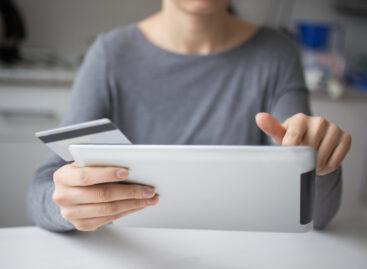In the wake of bank card fees – Costs are rising, but the conscious customer can still do well
Not only the contents of the shopping cart, but also our bank cards are becoming increasingly expensive – especially if we do not pay attention to the details. The increase in card fees is affecting the population sensitively, but thanks to the extra features and discounts offered by financial service providers, it is still possible to make smart decisions, writes Telex.
 The annual fees of bank cards have increased recently at almost all financial institutions, in many cases drastically. While a basic card is available at Gránit Bank for as little as 1,390 forints, the annual fee of prestige bank cards made of metal can climb to over 100,000 forints. K&H and UniCredit Bank already work with annual fees of over 10,000 forints, and Raiffeisen is in the range of over 8,000 forints.
The annual fees of bank cards have increased recently at almost all financial institutions, in many cases drastically. While a basic card is available at Gránit Bank for as little as 1,390 forints, the annual fee of prestige bank cards made of metal can climb to over 100,000 forints. K&H and UniCredit Bank already work with annual fees of over 10,000 forints, and Raiffeisen is in the range of over 8,000 forints.
The spectacular fee increases are not only due to inflationary effects: the financial burdens imposed on banks since the 2010s – such as transaction fees or special taxes – have gradually been incorporated into customer-side fees. Regulatory interventions, such as the postponement of the fee increase this year, only bring temporary relief – the real question is who can wisely exploit the opportunities related to cards.
In addition to the change in fees, there is also movement on the card brand front. Erste Bank will start replacing Mastercard-type cards with Visa cards this year – the first types to be affected by the switch are the Start, George and Standard. A similar process is underway at Raiffeisen and MagNet Bank. The new cards have a new card number, expiration date and CVC code, and no longer contain a signature panel – in other words, the adaptation to the digital payment environment is also evident here.
More and more transactions are taking place via mobile phones or smartwatches – today every third or fourth payment is made on such a device. The role of bank cards is changing, and the plastic card is gradually being replaced by digital tokens. Although bank cards will be with us for a long time, there are already some schemes that are available exclusively in digital form, such as Apple Wallet or Google Pay.
Banks also use their cards as marketing tools: real savings can be achieved through various cashback and discount programs. For example, Erste, K&H, OTP and UniCredit cards offer coupon programs that can be activated. At Raiffeisen Bank, coupons are not credited in advance, but based on purchase activity, afterwards.
For those who use their bank card abroad, the preferential currency exchange rate may be important – this can also be used by Erste, Gránit, OTP, Raiffeisen and certain MBH Bank customers.
For those who often use cash, it is especially worth reviewing bank fees. The Gránit Platina card, for example, provides four free domestic and two foreign ATM withdrawals per month, with no upper limit. This allows for cash withdrawals of up to several million forints per month without any fees – a significant advantage compared to the card’s annual fee.
Related news
The 6 most important payment trends in 2026:
🎧 Hallgasd a cikket: Lejátszás Szünet Folytatás Leállítás Nyelv: Auto…
Read more >Qvik is spreading at an incredible pace and is available at more and more merchants.
🎧 Hallgasd a cikket: Lejátszás Szünet Folytatás Leállítás Nyelv: Auto…
Read more >You can now pay utility bills with qvik
🎧 Hallgasd a cikket: Lejátszás Szünet Folytatás Leállítás Nyelv: Auto…
Read more >Related news
The 6 most important payment trends in 2026:
🎧 Hallgasd a cikket: Lejátszás Szünet Folytatás Leállítás Nyelv: Auto…
Read more >Tourism continues to expand dynamically
🎧 Hallgasd a cikket: Lejátszás Szünet Folytatás Leállítás Nyelv: Auto…
Read more >FEOSZ creates a certificate for consumer-friendly web stores
🎧 Hallgasd a cikket: Lejátszás Szünet Folytatás Leállítás Nyelv: Auto…
Read more >






